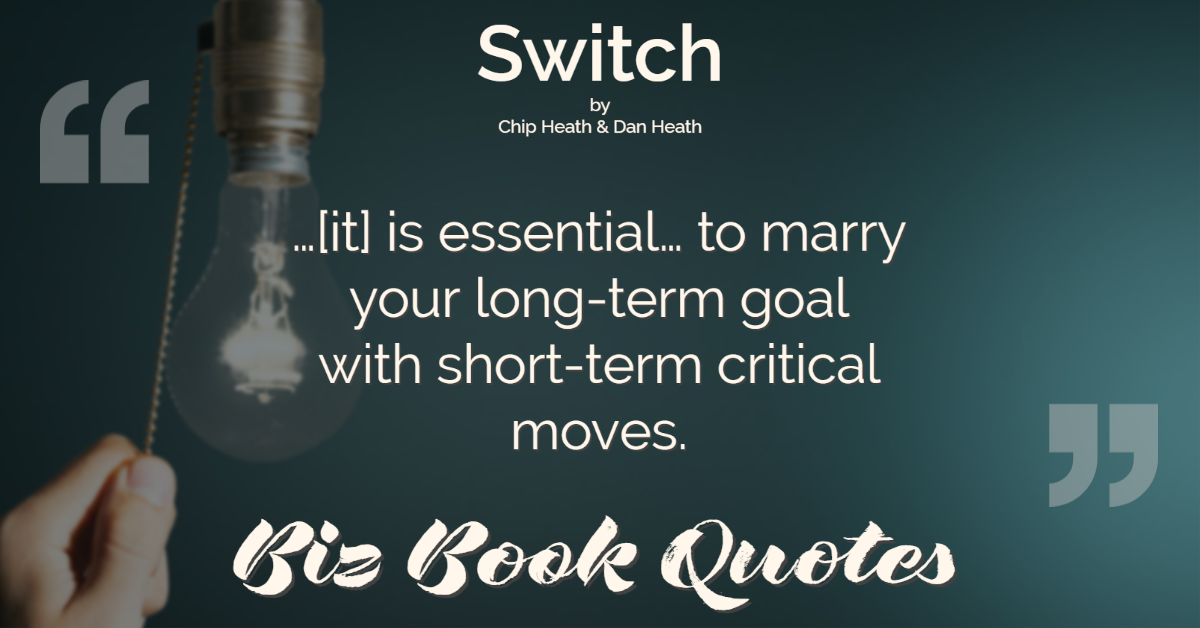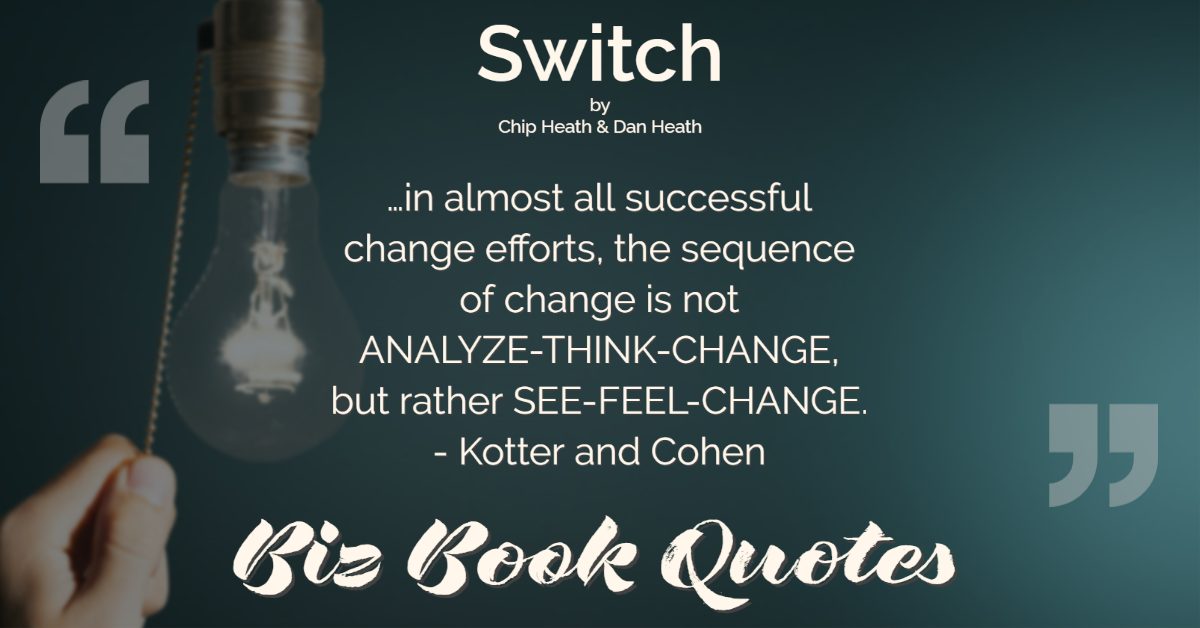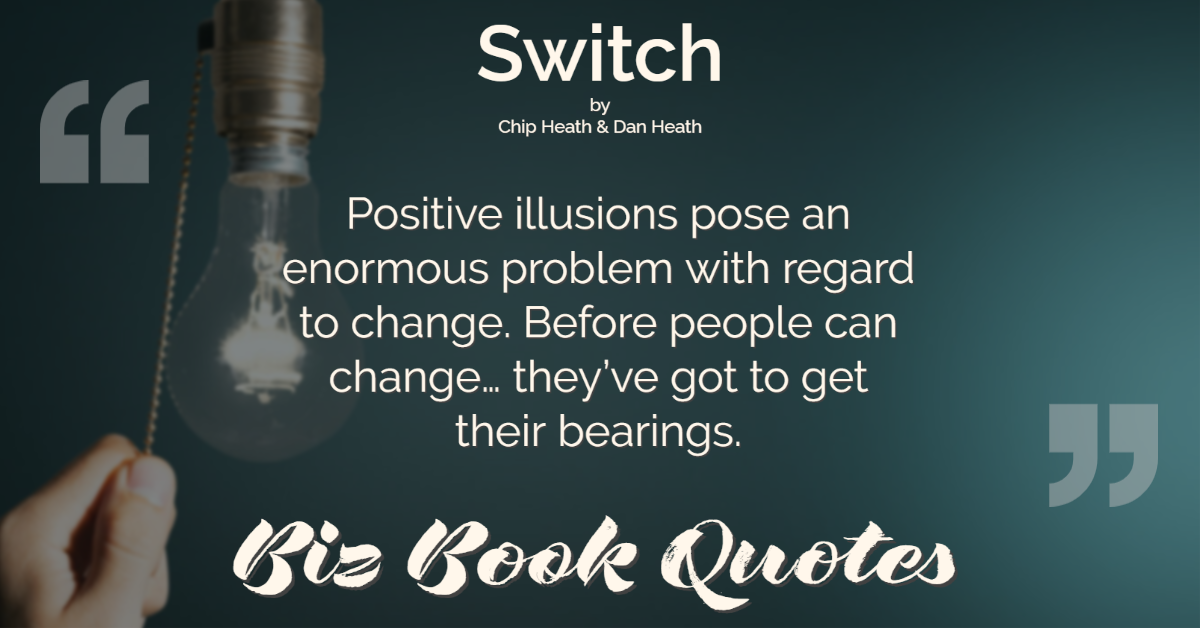|

|
Switch:
…[it] is essential… to marry your long-term goal with short-term critical moves.
|
93 |
|

|
Switch:
Don’t obsess about the failures. Instead, investigate and clone the successes.
|
98 |
|

|
Switch:
In most change situations, the parameters aren’t well understood, and the future is fuzzy.
|
106 |
|

|
Switch:
…in almost all successful change efforts, the sequence of change is not ANALYZE-THINK-CHANGE, but rather SEE-FEEL-CHANGE. – Kotter and Cohen
|
106 |
|

|
Switch:
Trying to fight inertia and indifference with analytical arguments is like tossing a fire extinguisher to someone who’s drowning. The solution doesn’t match the problem.
|
107 |
|

|
Switch:
When people push for a change and it doesn’t happen, they often chalk it up to a lack of understanding.
|
112 |
|

|
Switch:
Why can’t we simply think our way into new behavior? The answer is that, in some cases, we really can’t trust our own thinking.
|
113 |
|

|
Switch:
Positive illusions pose an enormous problem with regard to change. Before people can change… they’ve got to get their bearings.
|
115 |
|

|
Switch:
…if necessary, we need to create a crisis to convince people they’re facing a catastrophe and have no choice but to move.
|
119 |
|

|
Switch:
On a daily basis… negative emotions help us avoid risks and confront problems.
|
121 |











